Alternative Energy Onboard – Exploring the Options
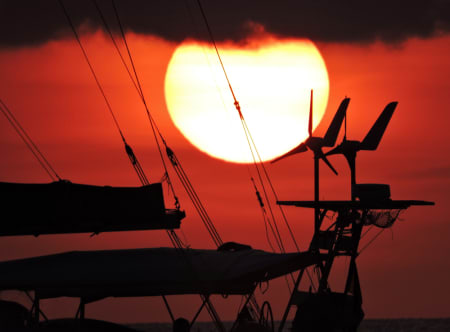
Every boater knows that redundancy onboard is a good idea – especially when it comes to keeping your batteries charged. With industry advancements, renewable energy options for onboard charging are not only vastly improved, but also becoming more affordable for boaters – so this Navigator will explore the pros and cons of adding Solar, Wind, Hydro or Fuel Cell technology to help you decide what makes the most sense on your boat.
Before You Start
The most important factor to help determine what will work best for you onboard is to determine what exactly are you trying to accomplish. Are you simply trying to keep your battery bank topped up without plugging in to shore power when not onboard? Or are you trying to offset normal power usage while cruising without relying on a genset or running your engine? Once you've determined what you're trying to do, you can figure out the number of amps you'll need to replace and which system (or combination of systems) will work best for that purpose.
Two additional aspects to consider are how you might install each system and what kind of weather conditions you're likely to experience where most of your cruising takes place. Installation limitations could easily make the decision for you – so think carefully about these things while doing your research.
By adding one (or more) alternative energy solutions onboard, you increase the reliability of your power supply while potentially realizing substantial savings by not burning fuel to recoup the energy lost – so it's worth exploring. With that in mind, let's look at the pros and cons of each of the best renewable energy option currently available for boats.
Solar Power

What's the downside? Mainly finding enough real estate onboard to create the total power needed. If you're just interested in topping up the batteries – solar power is a great option, but if you want to replace all the amps you're using while cruising – you'll be needing a fair amount of space for large panels, and that space should be shadow-free throughout the day to keep the panels at their most efficient. For more a more in depth look at installing solar power – check our Solar Power Basics Navigator.
Solar Power Pros |
Solar Power Cons |
| Works at anchor or underway | Only effective for part of the day |
| With optimal conditions a 100W panel will produce 33 amps/day | Small amounts of shading can greatly affect efficiency |
| Low maintenance | Can take up a lot of space |
| Long lasting | Less efficient the hotter they get |
| Safe operation | More power equals more panels/space |
| No noise | Needs good air circulation to operate efficiently |
Wind Power
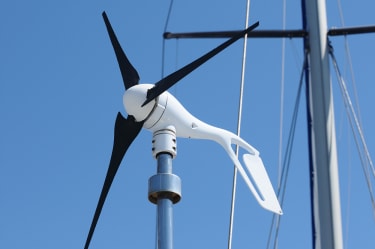
Wind Power Pros |
Wind Power Cons |
| Can produce power 24 hours a day | Can vibrate at certain wind speeds |
| Long lasting | Can be noisy |
| Low maintenance | Potential danger of blades |
| Works at anchor or underway | No power in a calm anchorage |
| Produces a lot of power in high winds | Low power generation sailing downwind |
Hydro Power
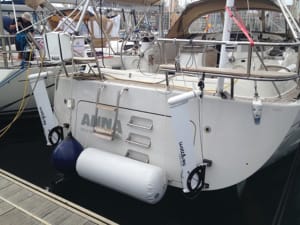
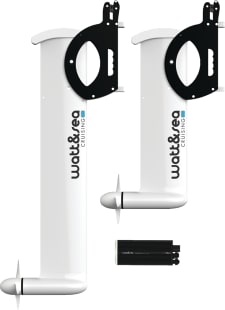
A newer player on the alternative energy marine market are Hydro generators, such as those made by Watt & Sea. The idea with Hydro (water) power is to create energy by towing something that spins as water moves past it, while creating the least amount of drag possible. Most Hydro power units are fastened to the transom of the boat and can be deployed or stowed depending on the power generation needs. The faster the boat moves through the water, the more amps the generator produces – but you'll want to be cruising at a minimum of 5 knots to get meaningful power production (the Cruising 600 model will produce 8 amps/hour at 5 knots of cruising speed – but at 8 knots it will produce almost double that). If you have a small boat and travel under 4 knots, Hydro power is not the option for you – but if you normally cruise in the 5-8 knot range, it's definitely worth considering.
Hydro Power Pros |
Hydro Power Cons |
| Excellent power generation underway | Power production underway depends on boat speed |
| Minimal drag at higher speeds | No power generation at anchor |
| Stows neatly when not in use | More expensive than solar or wind power |
| Silent operation | Vulnerable to damage |
| Higher maintenance |
Fuel Cell Power
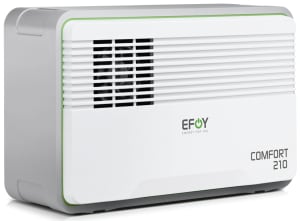
Finally – the newest alternative energy option for boaters is a fuel cell generator by Efoy Comfort. Like a gas or diesel generator, the Efoy can come on automatically and charge as much as you need it before shutting off again – all on its own. But unlike those generators, there is virtually zero noise or heat produced – and the byproducts of running it are water and carbon dioxide – making it a very “green” way to generate power. Empty fuel canisters can even be recycled!
The only real downside of Fuel Cell technology is the price for the amount of power it produces – which can be as low as 3.3 amps per hour, or as high as 8.8 amps/hour depending on the unit you choose. For those boaters that have smaller power needs, the Efoy is an excellent option – running quietly in the background with very little maintenance or attention – whether it's sunny, raining, windy or calm. But if you're looking to replace more than 150 amps a day while at anchor, the unit will be running almost constantly and you'll potentially go through “fuel” quickly – making it a more expensive option over the long run unless you supplement it with additional power from one of the other options above.
Fuel Cell Power Pros |
Fuel Cell Power Cons |
| Clean burning, by-products are water and carbon dioxide | Maximum capacity of 80-210 amps/day depending on unit size (running 24/7) |
| Automatically starts and charges when batteries get low | Slow amp hour production (3.3 – 8.8 amps per hour) |
| Very quiet | Need to carry/store “fuel” |
| Easy installation | Fuel available in limited locations |
| Can run 24/7 if needed | Most expensive option per amp |
| Runs efficiently at any temperature | |
| Low maintenance |
What's the Best Choice?
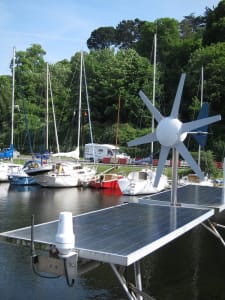
We hope you've found this Navigator on Alternative Energy Options helpful, but if you need more information, please don't hesitate to give our knowledgeable staff a call at (800) 426-6930.